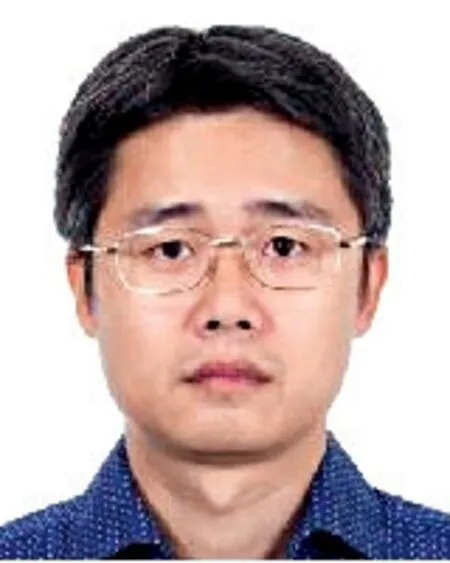A Special Issue:“Optimization and Key Equipments of Integrated Energy System” for Global Energy Interconnection
2023-12-29JianzhongWu,XiaojunWang,ZhenyuZhou
Energy is a critical basis for the survival and progress of humanity.Traditional energy systems,which are planned,designed,and operated in isolation,have artificially disrupted the interconnections among various energy forms.This limitation has reduced the reliability and flexibility of system operations,rendering them unsuitable for societal advancement.Integrated energy systems (IESs) dismantle the technical,market,and managerial barriers inherent in traditional systems.They integrate the planning and distribution of electricity,gas,heat,and cooling,playing a crucial role in incorporating new energy sources and improving energy efficiency.As IESs demonstration projects become more widespread,it is imperative to explore essential technologies for their sustainable growth and implementation.These include optimization of integrated energy system,multi-energy analysis of integrated energy system,key equipments of integrated energy system.
Addressing the issues mentioned,the editorial team of the Global Energy Interconnection Journal organized a special issue on “Optimization and Key Equipments of Integrated Energy System”.After a thorough review process,10 papers are selected for publication,originating from countries including China,Denmark,and Morocco.The content primarily encompasses four key areas:
1.For optimization of integrated energy system,Xiaojun Wang et al.from Beijing Jiaotong Universityproposed a probabilistic energy flow calculation method based on polynomial chaos expansion,for the risk assessment theories applicable to IES.Yunfei Mu et al.from Tianjin Universityproposed an optimal dispatch approach for a rural multi-energy supply system considering virtual energy storage,to the underutilization of energy and insufficient flexible operation capability of rural energy supply systems.Haitao Li et al.from Beijing University of Technologyproposed an energy management strategy for a multi-energy microgrid system,that includes various types of energy such as wind,light,electricity,and gas and can be internally converted.
2.For multi-energy analysis of integrated energy system,Wei Tang et al.from China Agricultural Universityproposed a coordinated planning method for flexible interconnections and energy storage systems to improve the accommodation capacity of distributed photovoltaics.Doha Bouabdallaoui et al.from Ecole Hassania des Travaux Publicsexplored the area of Artificial intelligence (AI) to predict windenergy production at a wind farm in Yalova,Turkey,using four different AI approaches.Yanhui Xu et al.from North China Electric Power Universityproposed an optimization method for power scheduling in hydrogen production systems under the scenario of photovoltaic electrolysis of water.Jiekang Wu et al.from Guangdong Universityof Technologyproposed a min-max-min two-stage robust optimization model to accommodate wind power as safely as possible and deal with the uncertainties of the output power of wind driven generators.
3.For key equipmen ts of integrated energy system,Sen Tan et al.from Aalborg Universitypresented an attack-resilient control strategy for microgrids to ensure voltage regulation and power sharing with stable operation under cyber-attack on the actuators.Zilong Han et al.from State Grid Shanghai Energy Interconnection Research Instituteproposed a trust evaluation model based on equipment portraits for power terminals,in response to the lack of effective trust evaluation methods for terminals.Yuansheng Liang et al.from South China University of Technologypresented the hardware architecture of a four-in-one vertically integrated device and the information transmission path of each function,based on the functional information transmission chain of protection devices,measurement and control devices,merging units,and intelligent terminals.
We would like to thank all the authors for contributing high-quality papers to this special issue.We are also grateful to the reviewers for their prompt evaluations and feedback,which significantly expedited the review and editing process.Our thanks extend to the journal's editorial board for their support throughout.We sincerely hope that readers will gain a deeper understanding of the cutting-edge technologies related to integrated energy systems through these articles.

Jianzhong Wu
Jianzhong Wu (Fellow,IEEE)is currently a Professor of Multivector Energy Systems and the Head of the Department of Electrical and Electronic Engineering,Cardiff University,Cardiff,U.K.He received the B.S.,M.S.,and Ph.D.degrees in electrical engineering from Tianjin University,Tianjin,China,in 1999,2002,and 2004,respectively.He specializes in the fields of Smart Grid and Multi-vector Energy Systems,which encompass integrated energy infrastructures.He is a Subject Editor of Applied Energy,the Director of Applied Energy UNiLAB on Synergies between Energy Networks,and the Co-Director of the U.K.Energy Research Centre and EPSRC Supergen Energy Networks Hub.

Xiaojun Wang
Xiaojun Wangis currently a Professor with Beijing Jiaotong University,Beijing.He received the B.S.,M.S.,and Ph.D.degrees in electrical engineering from North China Electric Power University,Beijing,China,in 2001,2004,and 2008,respectively.In 2014,he participated in the Bond program to study in the UK ALSTOM GRID LTD.His main research interests are integrated energy system operation,power system transmission and distribution coordinated optimization,distribution system fault diagnosis and location.

Zhenyu Zhou
Zhenyu Zhouis currently a Full Professor with the School of Electrical and Electronic Engineering,North China Electric Power University,Beijing,China.He received the M.E.and Ph.D.degrees in international information and communication studies from Waseda University,Tokyo,Japan,in 2008 and 2011,respectively.His research interests include resource allocation in device-to-device communications,machine-tomachine communications,smart grid communications,and the Internet of Things.He was an Associate Editor of IEEE Internet of Things Journal,IET Quantum Communication,IEEE Access,and EURASIP Journal on Wireless Communications and Networking,and a Guest Editor of IEEE Communications Magazine,IEEE Transactions on Industrial Informatics,and Transactions on Emerging Telecommunications Technologies.
杂志排行
Global Energy Interconnection的其它文章
- Over-limit risk assessment method of integrated energy system considering source-load correlation
- Optimal dispatch approach for rural multi-energy supply systems considering virtual energy storage
- Federated double DQN based multi-energy microgrid energy management strategy considering carbon emissions
- Coordinated planning for flexible interconnection and energy storage system in low-voltage distribution networks to improve the accommodation capacity of photovoltaic
- Layered power scheduling optimization of PV hydrogen production system considering performance attenuation of PEMEL
- Application of four machine-learning methods to predict short-horizon wind energy
